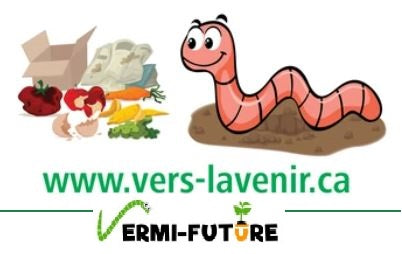Use MY VERMICOMPOSTER correctly

I CHOOSE A GOOD LOCATION
The vermicomposter can perfectly be placed inside the house. It's even the perfect place! It does not emit an odor and the temperature remains quite constant, the worms will develop optimally. It will therefore find its place in a laundry room, a stairwell, a corridor or even in the living room. It can also be placed outside (balcony, veranda), depending on the space available. In any case, it will be necessary to check that the conditions remain appropriate for the development of worms.
Temperature: between 15°C and 25°C
By moving away from this range, earthworm activity will slow down and their population may decline. When the weather permits, the vermicomposter can be left outside, but it is important not to expose it directly to the sun. In addition, heavy rain could drown the worms if the vermicomposter is not sheltered. At the arrival of cold nights, the vermicomposter should be kept indoors.
Ventilation
Since the decomposition process requires a good supply of oxygen, it must be ensured that there is air circulation around the vermicomposter and that an air exchange takes place between the inside and outside of the vermicomposter.
I CREATE A LITTER BOX AND ADD MY WORMS
For worms to perform their work effectively, it is necessary to provide them with an adequate living environment: litter.
It makes it possible to: retain moisture well, promote good aeration and provide a material rich in carbon (to balance with waste rich in nitrogen)
At startup:
I place a layer of 20-25 cm of litter at the bottom of the tray. I add water to the dry matter. The litter should be moist but it should not drip. As the vermicomposting process unfolds, the organic waste added to the vermicomposter usually provides all the required moisture. I place my worms in the damp litter and give them an adaptation period of a few days before I start feeding them.
Over time:
I regularly add litter, which allows the absorption of odors and moisture. It provides a source of carbon to balance decomposition and makes food inaccessible to fruit flies.
I BRING THE APPROPRIATE WASTE TO THE WORMS
- I let my worms acclimatize for a few days before feeding them.
- I add my organic waste to the litter box and cover with some litter.
- When using multiple stacked bins, wait until the bottom bin is filled and add an extra bin, always covering with a little litter.
I HARVEST AND USE MY VERMICOMPOST
More than just a fertilizer, vermicompost is one of the richest soil improvers for gardening.
Harvest after three to six months: The vermicompost obtained is a dark brown granular material, a mixture of worm droppings and partially decomposed organic matter. The more advanced the decomposition process, the richer the vermicompost.
I HARVEST AND USE MY WORM TEA
A liquid, also called "wormtea", is formed during the decomposition of waste. Indeed, the activity of worms and bacteria releases the water contained in organic waste. This water filters through the vermicompost already produced and is loaded with nutrients to become a liquid fertilizer.
For systems with tap, simply lightly open it and harvest the precious tea. For systems with a harvesting bin, transfer to a pot occasionally.
